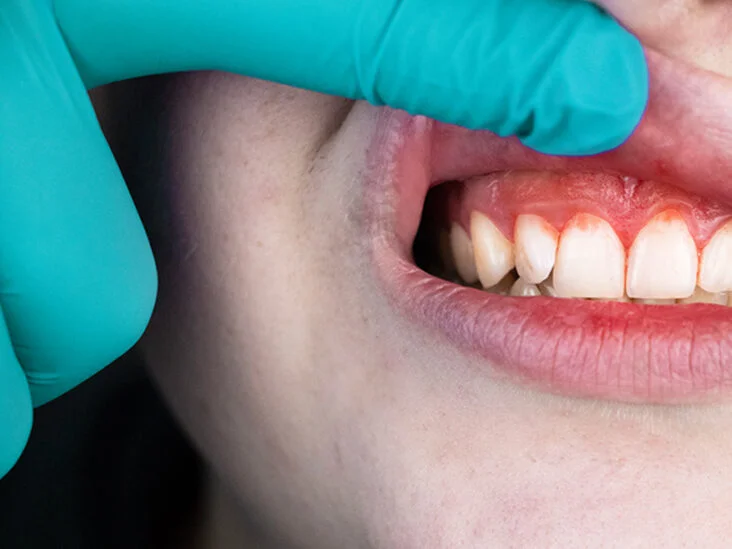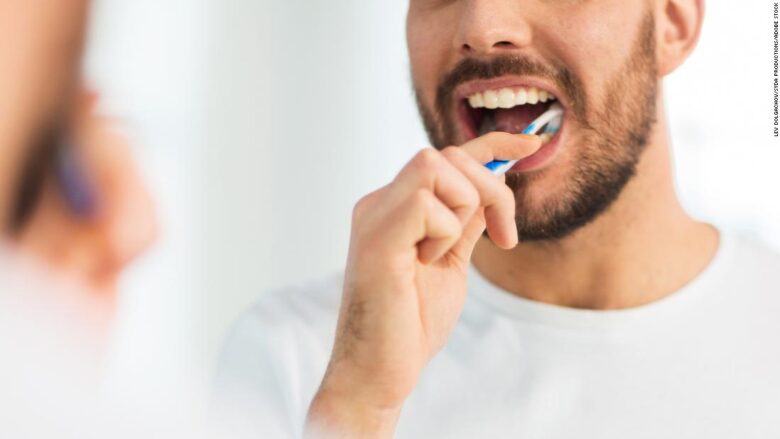Periodontal disease usually occurs due to bone and gum implementations and infection. The early stage of gingivitis considers red, swallowing, and bleeding gums while worsening condition leads to painful chewing and tooth loss. Periodontal diseases affect half of the adult population in the USA.
In the additional text, dentistry Harrisburg NC will shed light on this problem, discussing different types of periodontitis and how to deal with them.
Types of periodontal diseases

Source: healthline.com
Gingivitis
Gingivitis mainly occurs as a result of inflamed gums due to bacteria plague. This represents the milder phase of gum disease and can be successfully treated by improved oral hygiene: in-depth teeth brushing, usage of floss and mouthwash, and professional dental cleaning.
Periodontosis
Periodontosis is the next stage of gingivitis and takes its place due to neglect of gum disease. This stage considers gums that start to pull away from teeth and form pockets. Further, pockets are prone to infections, which result in bacteria damaging connective tissue and bone. This state requires professional treatment and medications.
Reversing periodontal disease

Source: cnn.com
1. Adequate oral hygiene
Good oral hygiene is the first and most significant step in both the prevention and reversal of periodontitis. Though brushing, flossing, and mouthwash reduce infections. Besides brushing your teeth at least two times a day, and daily flossing, to improve mouth hygiene you can use interdental brushes or soft picks.
If you consider that tooth brushing doesn`t completely remove residue, opt for an electronic through brush instead as they usually have smaller and oscillating heads able to outreach hard reaching areas in the mouth and back of the mouth with second and third morals.
2. Professional Cleaning
Professional dental cleaning considers removing tartar and plaque between the teeth and above and below the gums with a scaler. Scaling removes layers and pieces of deposits in teeth enamel. If the plaque and tartar are persistent, the dentist will use ultrasound to break the calculus. The next step will be expert flossing and polishing teeth. Teeth scrubbing is performed with an electronic toothbrush and abrasive toothpaste.
Another important part of dentist cleaning is root planning for smoothing out the tooth root as bacteria tend to stick in rough areas, intensifying periodontosis.
Natural Remedies

Source: colgate.com
3. Oil Pulling
Oil pulling is a practice of removing plaque by taking a spoonful of oil and pulling the oil between the teeth for 20 minutes. After this process, one can rinse the mouth with warm water or even add some salt for antibacterial properties. You can use sesame or coconut oil to perform oil pulling.
4. Saltwater
Saltwater has antibacterial advantages and is successful in sooting swollen and painful gums.
5. Hydrogen Peroxide
Hydrogen peroxide is a worthy ingredient in threatening receding, swollen and sore gums. For this solution, you need to mix ¼ cup of hydrogen peroxide 3% and ¼ cup of warm water and rinse your mouth for 30 seconds.
6. Turmeric gel
Turmeric is a spice with natural anti-inflammatory and antioxidant properties, therefore, turmeric gel is a great remedy to stop gingivitis.
7. Lemon
Lemon possesses antibacterial properties which makes it a good remedy to fight bacteria-caused gum recession. It is recommended to use lemon for this purpose once a week and not often due to lemons’ acidic features that can damage tooth enamel.
8. Septilin
Septilin is a herbal solution that contains licorice, guduchi, and guggul. Mentioned remedies have antinflamatora properties and are great for frightening gum recession caused by bacteria.
9. Aloe Vera
Aloe Vera is a plant widely known for its anti-inflammation properties. For treating receding gums, medical aloe vera is injected into inflamed gums to improve gum tissue condition.
Besides natural ingredients that can help in handling receding gums, severe conditions of periodontal diseases require more serious treatment with help of medications and a dentist.
Medications
Some medications can be prescribed as a part of the treatment to reduce periodontal disease.
- Mouthwash water which contains chlorhexidine and anti microbes substances
- Antiseptic chip, a small gel chip containing chlorhexidine placed into the periodontal pocket
- The antibiotic gel that contains doxycycline
- Antibiotic microspheres, the small particles with minocycline
- Enzyme suppressant refers to low doses of doxycycline to reduce values of damaging enzymes
- Oral antibiotics for treating periodontal infections.
Surgical solutions

Source: forbes.com
Severe conditions of receding gums often demand to be treated by a dental surgeon. Depending on the condition, these procedures can be:
1. Flat surgery
This procedure refers to the deep cleaning of gum tissue. Flat surgery considers lifting up the gums, cleaning the area beneath them, and then placing the gums back on the teeth.
2. Tissue Graft
This procedure is an adequate solution for severe gum recession. The procedure considers taking the piece of tissue from the mouth roof and attaching it to the gum line. The result is making protection of exposed roots with added tissue.
3. Bone regeneration
In cases when gums are significantly receded and involve teeth bone and jaw bone regeneration is an adequate procedure. This treatment implies protein application that stimulates tissue growth.
4. LANAP
LANAP considers a series of laser treatments that promotes natural tissue regeneration.
In conclusion, reversing periodontal disease involves making various changes to your diet and lifestyle. This includes ensuring that you consume a nutrient-rich diet with plenty of vitamins, minerals, and other essential nutrients, while also limiting sugary and processed foods. Additionally, it is essential to maintain a consistent oral hygiene routine by brushing and flossing daily as well as rinsing with an antibacterial mouthwash to help prevent the build-up of plaque. Furthermore, regular professional dental cleanings can help break down plaque along the gum line and reduce inflammation before it progresses further. Over-the-Counter treatments may also be employed for milder cases of periodontal disease or in combination with other treatments. Natural remedies such as green tea extract or eucalyptus oil may also be used to manage symptoms associated with this condition. Ultimately, consulting an experienced dentist is important for getting the best advice and treatment plan for reversing your periodontal disease. With timely identification and proper medical intervention, you may be able to successfully reverse periodontal disease.
